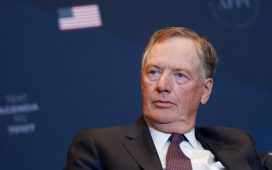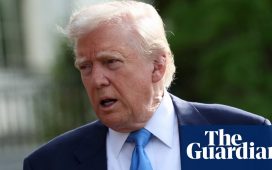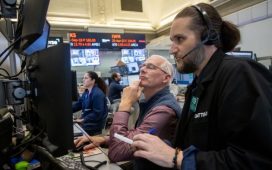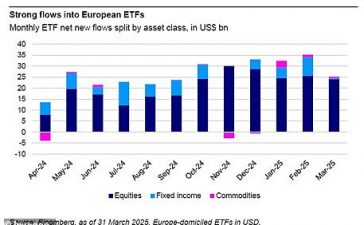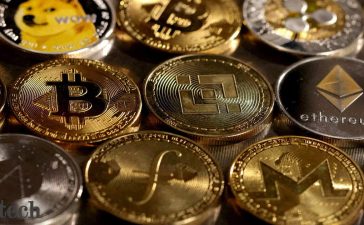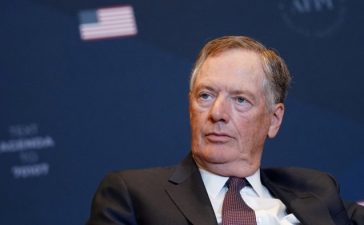The Federal Reserve has signalled that US borrowing costs are likely to remain higher for longer, as it wrestles with persistent inflation across the world’s biggest economy.
The Federal Open Market Committee said after its meeting on Wednesday that there had been “a lack of further progress” towards its 2 per cent inflation goal in recent months — an addition to its statement that in effect delays rate cuts until the second half of this year at the earliest.
“It is likely to take longer for us to gain confidence that we are on a sustainable path down to 2 per cent inflation,” Fed chair Jay Powell said during a news conference after the announcement. “I don’t know how long it will take.”
But the Fed also indicated that it was not yet considering new rate rises to counter the recent uptick in inflation, saying that the risks to meeting its joint goals of full employment and subdued price pressures had “moved towards better balance over the past year”.
“I think it’s unlikely that the next policy rate move will be a hike,” Powell said. The comments initially pushed up US equities, but those moves reversed later on in the day, with stocks closing lower.
The comments from Powell came as the US central bank held interest rates at 5.25 per cent to 5.5 per cent, a 23-year high that has been in place since the summer of 2023.
The higher-for-longer rate signal from the Fed follows recent data showing that inflation had crept higher again, largely driven by costlier fuel, while the US economy grew more slowly in the first quarter of the year than expected.
The comments from the Fed also mean that borrowing costs could remain higher for many US voters in the run-up to this year’s presidential election in November. President Joe Biden said recently that he “expected those rates to come down” this year.
“The Fed’s room for manoeuvre has shrunk drastically, with inflation ticking up, growth slowing, and the political calendar becoming an increasingly tight constraint,” said Eswar Prasad, an economics professor at Cornell University.
“The spectre of stagflation, which the Fed seemed to have decisively put behind it in 2023, is now back in the picture,” he added.
Powell pushed back against that prognosis of 1970s-style inflation coupled with stagnation in the economy, saying growth remained strong and price pressures were under 3 per cent.
“I don’t see the ‘stag’, I don’t see the ‘flation’,” he said.
The Fed also announced that from June it would reduce the cap on the amount of US Treasury bonds it allows to mature each month, without buying them back, from $60bn to $25bn. It would still allow up to $35bn in mortgage-backed securities to roll off the balance sheet. Any principal payments in excess of the $35bn cap would also be reinvested in Treasuries.
In a market where some Treasury auctions are currently at record sizes, the slowdown in quantitative tightening could help bolster prices, and lower yields.
US rate-setters had hoped to cut interest rates three times this year, but higher-than-expected inflation in recent months has raised the prospect that the Fed will keep borrowing costs at current levels for the duration of 2024.
Ahead of the meeting, traders in the futures market were betting on between one and two cuts this year, with the first reduction not fully priced in until December. Those expectations held true through the meeting, although traders added to their conviction about a cut towards year-end.
Treasury yields ended the day lower, with the two-year yield — which moves with interest rate expectations — down 0.08 percentage points to 4.96 per cent. The S&P 500 and Nasdaq Composite both closed down 0.3 per cent.
The Fed “believes that monetary policy is still restrictive”, said Priya Misra, fixed income portfolio manager at JPMorgan Asset Management.
“The Fed is trying to calm the market and telling us that they are not reassessing the state of monetary policy . . . Powell has been very careful to not bring up hikes. He stuck to the message, which is why we’ve seen the market reaction we have.”
Nomura chief economist for developed markets David Seif said Powell’s statement was “more dovish” than expected. “There was some fear that Powell could describe a new and more hawkish reaction from the Fed, by saying the second half of last year made it look like inflation is coming down, but that’s been reversed in the first quarter.”
The Fed statement on Wednesday came after recent price data showed its progress in lowering inflation in 2023 had stalled this year.
The headline personal consumption expenditures measure, on which the Fed’s 2 per cent goal is based, edged up in March — to 2.7 per cent, from 2.5 per cent in the year to February.
Rate-setters’ preferred gauge of underlying price pressures, core PCE, which strips out volatile food and energy prices, was unchanged at 2.8 per cent.
Additional reporting by Martha Muir in Washington

